The mere mention of planning a Working Holiday adventure in Canada usually prompts people to ask where you’re planning to settle: “Toronto, Vancouver or Montreal?”—as if there are only three options available in the entire country! But how about considering Ottawa, Canada’s capital city?
Picture-perfect Ottawa is a family-friendly city, so it might be a tempting option if you’re coming to Canada with young children. There are interesting job opportunities in NGOs, tech companies and post-secondary education. You can benefit from more affordable rent compared to Ontario’s other main city, Toronto. You can also enjoy Ottawa’s close proximity to the province of Quebec, making this a great place to learn or practise your French!
Here is the full guide if you want to settle in Ottawa or explore it during your stay in Canada.
Click the buttons to navigate to:
Ottawa at a glance
Ottawa is located in Ontario, on the south shore of the Ottawa River, the chief tributary of the St. Lawrence River. It is bordered by the province of Quebec. It’s about 200 km from Montreal and 450 km north of Toronto. Across the border in the US, the state of New York is only a 45-minute drive from Ottawa.
- Population: 1,017,449 (2021 census)
- Area: 2,788.2 km2
- Population density: 364.9/km2
- Climate: continental, with an average of 20 °C in summer and -10 °C in winter (extreme weather events are common with lots of snow and ice in winter, high humidity and powerful storms in summer).
- Founded in: 1800 (as a result, Ottawa has many historic tourist attractions, including the Rideau Canal, a UNESCO World Heritage Site)
Like all major Canadian cities, Ottawa is a welcoming place where you will meet people from all over the world and from all walks of life.
Do people speak English or French in Ottawa?
Bilingualism is the official policy and it’s common to be greeted by “hello, bonjour!” Signs, official communications and services are offered in both English and French, but you’ll hear way more English than French used in Ottawa on a daily basis. Indeed, 60% of Ottawa’s population speak English as a first language, compared to around 15% who speak French as their first language.
French is mostly spoken across the river in Quebec. On top of Canada’s two official languages, you will hear Arabic, Spanish, Chinese, Somali, Persian, etc. Ottawa is a multicultural city with vibrant communities from all continents.
What’s the atmosphere like?
Ottawa is pretty and peaceful, with nature and green spaces all over the city—there’s the huge Experimental Farm in the middle of the city, large parks and gardens, and several public beaches on the shores of the Ottawa and Rideau rivers.
The 19th-century Rideau Canal is a testament to Ottawa’s military history and the waterway uses operational manual locks to this day. The 202 km-long waterway runs from Kingston to Ottawa. This historic site is full of boats in summer and becomes the longest skating rink in the world in winter.
With so much access to nature, it’s no wonder that Ottawa is perfect for all kinds of outdoor activities, from cycling to cross-country skiing, from hiking to ice skating.
The urban side of Ottawa features diverse neighbourhoods like Little Italy or Chinatown, and many historic buildings, such as the Parliament and Château Laurier. The downtown core is home to several festivals and events that showcase jazz music, tulips, ice sculptures, and poutine.
There’s no shortage of museums to explore when the weather is bad. The two main universities and a strong network of public libraries also host year-round events of all kinds.
Even though Ottawa isn’t as lively as Toronto or Montreal, there’s still a party scene with welcoming bars and clubs, especially around the Byward Market, Elgin Street and Preston Street. The city is, overall, very safe—it has the lowest rate of violent crime among Canada’s six largest cities over the past decade.
It’s a peaceful, low-key city but it offers a great quality of life.
Getting there and getting around
The Ottawa International Airport
Surprisingly, there are relatively few direct flights to Canada’s national capital from Europe, Asia or Latin America. Most airlines, including Air Canada, connect through Montreal or Toronto.
Keep in mind that Montreal’s Trudeau Airport is only a two-hour ride from Ottawa and that several bus companies can take you there for around CA$50-75. If you find a cheap plane ticket to Montreal, it’s worth buying it!
The Ottawa International Airport (“YOW”) is located roughly 10 km from downtown. It’s a fairly small airport, especially compared to Montreal and Toronto.
All taxis are metered and a ride to downtown costs around CA$30-50. The main companies are BlueLine and Capital Taxi.
Ridesharing services are allowed at the airport. The pickup location is at pillars 12 and 13.
OC Transpo, Ottawa’s public transportation service, offers a connection to downtown. The 30-minute ride is CA$3.85 (the regular ticket price) and you can pay on board, exact change only. Take the #97 bus, which runs every 20-30 minutes from 4:07 a.m. to 3:37 a.m.
Picking up a rental car at the airport is another option. Don’t miss pvtistes deals with Hertz, Dollar and Thrifty.
Coaches and buses
Flixbus offers low-cost bus services to and from 16 Canadian cities. Gray Line is a good option for exploring the wider region with guided city tours, themed tours and a hop-on hop-off service.
VIA Rail trains
VIA Rail is Canada’s only rail service company. Ottawa is a stop on the Quebec City-Windsor route that runs through Quebec and Ontario—this could be the start of an epic train trip through the country or to amazing cities like Montreal and Toronto!
Public transport
Keep in mind that Ottawa is very spread out and that it gets extremely cold in winter. You will probably need to rely on several transportation options to get around.
OC Transpo is Ottawa’s public transportation company. It operates different types of services:
- A regular bus network: 199 routes served by a fleet of more than 850 buses, all of them accessible to wheelchairs and strollers.
- The Transitway: a rapid transit network with bus-only roadways and dedicated lanes on 11 routes (perfect for rush hour!).
- Para Transpo: minibuses providing a door-to-door transportation service for people with permanent or short-term disabilities.
- The O-Train: a two-line light metro transit system (don’t get any local started on it, it’s… ahem, a work in progress!).
OC Transpo offers per-ride fares (CA$4.05 for cash payment, exact change only). Most regular users load money onto a Presto card for convenience (the card costs CA$4 to purchase but has no expiry date). You can also purchase a day, week or monthly pass if you know you will be taking public transport a lot. Check the current fares here.
Note that you get a 90-minute transfer window on Ottawa’s public transport system.
If you’re going across the river to Quebec, you will need to take the STO (Société de transport de l’Outaouais) buses. The two services connect and a valid transfer can be used to jump from an OC Transpo bus to an STO bus and vice versa.
Buses are often your best option if you need to get somewhere during a snowstorm. On snow days, buses may operate on a reduced schedule and delays are often expected but they do usually run and they are designed to withstand winter conditions (the same can’t be said for the O-Train, which often shuts down due to weather).
If you have a car, consider taking the bus instead of driving, especially if you’re not used to driving in the snow.
Cycling or walking
Ottawa is relatively bike-friendly with 200 km of multi-use pathways, stretching from Gatineau Park, through downtown and into the Greenbelt. Check out the official cycling map for Ottawa-Gatineau for more details.
Outside the designated pathways, cycling becomes more dangerous. Don’t forget that drivers can turn right on a red light after coming to a complete stop if the way is clear of traffic—many drivers tend to turn too fast and don’t pay attention to pedestrians or cyclists.
The downtown core, Chinatown, Little Italy, Westboro and a few other neighbourhoods are very walkable with sidewalks and pedestrian crossings. You can even walk across the Alexandra Bridge to Gatineau. However, many places in Ottawa aren’t very pedestrian-friendly—narrow or non-existent sidewalks, a lot of traffic, dangerous crossings, etc. As in many other North American cities, Ottawa is working on developing plans to move people around safely and find alternatives to cars.
Driving in Ottawa
Ontario driver’s licence
You can use your foreign licence if you’re staying in Ontario for up to three months. For longer stays, you will need to go through the driver’s licence exchange process to switch your home licence for an Ontarian licence. Learn more.
Ontario has licence exchange agreements with certain provinces, states, and countries—check the full list and requirement details here.
Depending on your citizenship, you may have to show an International Driving Permit (IDP) or an official translation along with your foreign licence. This is especially the case if your home licence is not written in English or French. If you will need an IDP, you must get this document before coming to Canada, as Ontario doesn’t issue the IDP.
Traffic rules and parking bylaws
Even as an experienced driver, you may want to take a moment to review Ontario traffic rules and road safety in general. The Official Ministry of Transportation (MTO) Driver’s Handbook covers everything you need to know. For instance, you must stop for school buses and streetcars.
The City of Ottawa offers up-to-date information on parking, roads and travel. Pay attention to winter parking bans and review general parking regulations carefully.
It takes time to get used to driving in the snow. Get to know your vehicle and local conditions!
Rush hour in Ottawa tends to be around 8-9 a.m. and 4-5 p.m., since many civil servants work 9-5 jobs. The pandemic and work-from-home agreements changed the game a bit but you can still expect slower traffic from Quebec to Ottawa in the morning and from Ottawa to Quebec in the afternoon. You will also probably hear the following joke: “There are two seasons in Canada, winter and construction.” Indeed, as soon as the snow has melted, you can be sure that some lanes somewhere will be closed to traffic because of construction!
Buying a car
You will find second-hand car offers on classified websites like Kijiji and Craiglist. Try to enlist expert help if you don’t know much about cars, it’s easy to get scammed!
The next two steps will be registering and insuring your vehicle. Remember to compare car insurance coverages and companies. Get several quotes and read the fine print!
For a comprehensive overview of the whole process with tips and advice, read Buying a car in Canada.
Renting a car
If you want to rent a car for your time in Toronto, start by reading Everything you need to know to rent a vehicle in Canada.
Carsharing companies such as Communauto are a great alternative to the traditional car rental business, and rates are often cheaper too.
All the main companies like Avis, Hertz, Dollar, and Budget have offices in Ottawa. Get quotes as rates vary greatly, and don’t forget to read the fine print to see what’s included.
Pvtistes offers discounts and perks if you rent a vehicle with Hertz, Thrifty or Dollar—check them out before making a decision!
Tackling your to-do list to get started in Ottawa
If you’re just getting started on an IEC permit in Canada, you will probably need to open a bank account, apply for your Social Insurance Number, get a mobile phone plan, etc. First, read The arrivals process and your first steps in Canada to get your priorities in order for your first few days in Ottawa.
Taking English or French classes
Ottawa is a great place to work on your language skills. Pvtistes.net offers members a generous discount on various courses, such as 20% off language courses with Babbel or 10% off Global Lingua online language courses.
How to find a place to stay in Ottawa
Overview of Ottawa’s main neighbourhoods
The National Capital Region (NCR) encompasses Ottawa, ON, the adjacent city of Gatineau, QC, and the surrounding suburban areas. So, you will have to decide whether you want to live in Quebec or Ontario.
Neighbourhoods in Ottawa, Ontario:
1. Orleans
At the east end of the city, Orleans is Ottawa’s French corner with many French-speaking residents.
2. Little Italy
Little Italy is between Dow’s Lake and Lebreton Flats—just follow Preston Street; you can’t miss it. You’ll find dozens of Italian restaurants, eateries and delis. This is a very walkable neighbourhood with a mix of old one-storey houses and fancy new condos.
3. Downtown
The downtown core is split between the business district from Bank Street to Elgin Street and the historic area around the Byward Market. Downtown Ottawa is home to dozens of landmarks and famous buildings, including Parliament Hill, the Rideau Canal, Château Laurier, and more.
4. Byward Market
The Byward Market is one of Ottawa’s liveliest neighbourhoods with delis, restaurants, pubs, small businesses, buskers and the big Rideau shopping mall next door. It’s a great place to stroll around in the daytime and offers many entertainment options after sunset.
5. The Glebe
Bustling and seemingly endless Bank Street crosses this lively, popular neighbourhood with plenty of quieter residential side streets. Despite (or maybe because of) a very hip and relaxed atmosphere, it’s an expensive area to live, with lovely detached houses and two-storey buildings.
Check out this photo group documenting the Glebe.
The yearly Glebe garage sale attracts quite a crowd. This is the most popular event of this type in Ottawa.
6. Centretown
Much like in the Glebe, businesses line Bank Street and Elgin Street, with condos and older houses in side streets such as MacLaren and Gladstone.
7. Chinatown
Ottawa’s Chinatown is smaller than in Vancouver or Toronto but Somerset Street still offers an interesting mix of Chinese, Vietnamese and South-East Asian culture with many restaurants, grocery stores and themed events.
The neighbouring city of Gatineau, Quebec
Five cities (Aylmer, Buckingham, Hull, Masson-Angers and Gatineau) merged to form Gatineau, the fourth-largest city in Quebec, with a population of almost 300,000.
Gatineau is only a 30-minute drive from downtown Ottawa, so many people live in Quebec but work in Ontario. This is particularly true for families who are looking for better-subsidised daycare options, an education in French, and more affordable real estate in Quebec.
Gatineau could be described as a “commuter town”—it’s not the liveliest place to stay if you’re single, if you don’t have a car or if you like to go out a lot, but it can be a cheaper alternative to Ottawa.
The former city of Hull is now a neighbourhood of Gatineau. This is the historic part of town with a lively business district. It has numerous pedestrian-friendly streets, pubs, restaurants, and more. The further from Hull, the cheaper the rent.
Buckingham is mostly a residential neighbourhood. It’s further from downtown Ottawa (a 40-minute drive) but closer to Westboro, Alta Vista and Overbrook on the Ontario side.
Are there any neighbourhoods to avoid?
Although Ottawa is a very safe city by Canadian and world standards, Vanier is often mentioned as a rougher area. This neighbourhood has the second-highest crime rate in Ottawa but it’s also a vibrant community with some of the most affordable rentals in the city.
Short- and long-term accommodation solutions
Since it’s always best to avoid signing a lease from abroad, you may want to find a place to stay for a few days or a few weeks while looking for a more permanent option.
There are several hostels, including the famous “Jail Hostel”, housed in a former jail. Check out availabilities and rates on websites like Hostelworld.
Both Airbnb and Booking.com list apartments, rooms and houses in various Ottawa neighbourhoods. Hotels won’t be a cheaper solution; rates tend to be high in Ottawa because they are typically booked for business travel.
Check out Finding accommodation in Canada and How expensive is life in Canada for more tips and information.
Working in Ottawa
The federal government is the main employer in Ottawa, followed by tech companies, health care and education.
Start by reading Finding a job and working in Canada for a complete overview of the Canadian job market. You may also want to check out our list of the Best job search websites.
Volunteering is a great option to gain your first work experience in Canada (and references!), ease into the culture and meet like-minded people. Ottawa is home to a strong network of organisations dedicated to making a difference in the world, in communities and people’s lives. Websites like Charity Village list all kinds of opportunities (paid or not) with non-profit organisations.
Culture, entertainment and tourism in Ottawa
Eating and drinking
Like many cities in this multicultural country, Ottawa offers a wide variety of authentic food from all over the world.
Little Italy does pizza, pasta and everything in between just right, while Chinatown can introduce you to fantastic Cantonese dim sum or Vietnamese phở. The Byward Market and Elgin Street are usually the place to go for a pub crawl but there are gems all over the city.
Keep in mind that tipping is socially mandatory in Canada!
Sports and outdoor activities
Professional teams
Ottawa is home to two North American major professional leagues: the Ottawa Senators (National Hockey League) and the Ottawa RedBlack (Canadian Football League). You can watch ice hockey games at the Canadian Tire Centre in Kanata and Canadian football at TD Place Stadium. Ticket prices vary widely but both teams play many games over the season, so there are chances to score a good deal.
Curling is popular in Ottawa—several associations can introduce you to this unique sport. Otherwise, you can also turn to roller derby, baseball, soccer, lacrosse and many more popular Canadian sports.
Outdoor activities
Ottawa is the perfect playground for outdoor activities with many trails and parks.
If you want to try ice skating, you’re in the right place! You can skate on the Rideau Canada or in one of the many free outdoor rinks all over the city.
Hockey Day is celebrated in the dead of the winter with grassroots and national events—it doesn’t get more Canadian than that…
Gatineau Park is a great place for cross-country skiing. For decent slopes, the closest resort is Mont Tremblant, in Quebec.
In summer, make the most of the many parks to go hiking, cycling, canoeing, camping and more.
Facebook groups are a great resource to join local sports teams. Community centres can also connect you to the right people.
Arts and culture
Museums
Ottawa is home to seven national museums including:
- The Canadian Museum of Nature
- The Canada Science and Technology Museum
- The Canada Aviation and Space Museum
- The Canadian War Museum
- The National Gallery of Canada
- The Canadian Agriculture and Food Museum
- The Canadian Museum of History (across the river, in Quebec)
There’s also the Ottawa Art Gallery, the Bank of Canada Museum and several national historic sites.
Admission is generally free on Thursdays from 5 p.m. to 7 p.m. or during the last opening hour of the day, as well as during special days like Family Day. Check the websites for details.
Public libraries
Ottawa boasts a strong network of public libraries with their main branch on Metcalfe Street and branches all over the cities.
Each library offers access to a WiFi network, tons of books in different languages, a community ad board, training material for certifications and courses, newcomer services and more. Seriously, your local library is a goldmine!
To get a library card, simply show a piece of ID and proof of address (bank statement, bill, etc.). The card is free for all Ottawa residents.
Performing arts
The National Arts Centre and the Shenkman Arts Centre offer amazing programming year-round. Smaller venues and companies also have musical, theatrical, dance and a variety of performances.
Festivals and special events
Ottawa loves hosting festivals, even in winter!
Beloved yearly events include:
- The Gatineau Hot Air Balloon Festival (late August or early September)
- Winterlude (February)
- The Canadian Tulip Festival (May)
- The Ottawa Jazz Festival (June)
- Bluesfest (July)
- CityFolk Festival (September)
Ottawa Festivals lists all the events: there are many more!
Other major celebrations include Canada Day, Hockey Day, and Capital Pride.
Exploring Ottawa and beyond
Landmarks, historic sites and parks
Check out Ottawa Tourism for the full list of interesting places beyond Parliament Hill and the Rideau Canal.
Don’t miss Gatineau Park (in Quebec): the best place to admire the fall rhapsody in September and October, when the leaves turn red, orange and yellow.
Just behind Château Laurier, Major’s Hill Park offers amazing views of Parliament Hill, the Ottawa River and the Rideau Canal locks.
Visiting the US
Ottawa is a short one-hour drive from the US border. The two major crossings to New York State are the Ogdensburg-Prescott International Bridge and the Seaway Bridge (Massena Cornwall). If you’re aiming for New York City, keep on driving another eight hours. Otherwise, you can enjoy small communities like Ogdensburg, Alexandria Bay or Massena.
Regardless of your status in Canada, and even for a same-day trip, you will need to go through US border control. Check beforehand to see whether you need to apply for a visa or an ESTA.
Now, enjoy planning your stay in Ottawa!
Do you have any tips? What are your favourite places in the city? Share your best spots with us in the comments section below.
















 Français
Français English
English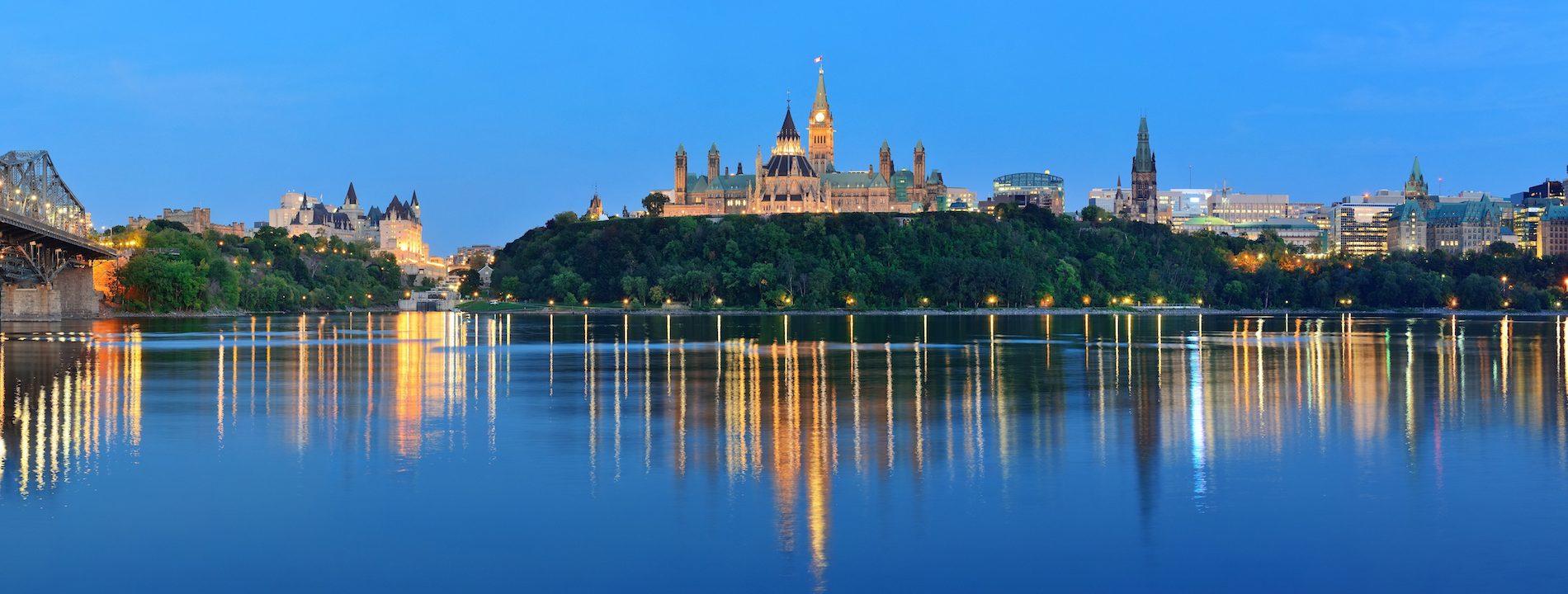
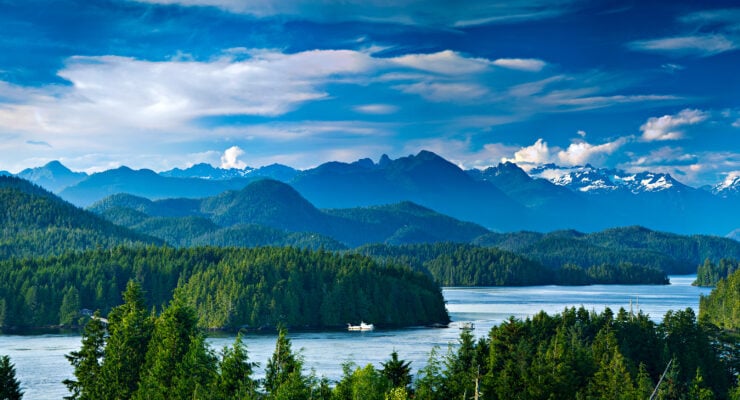
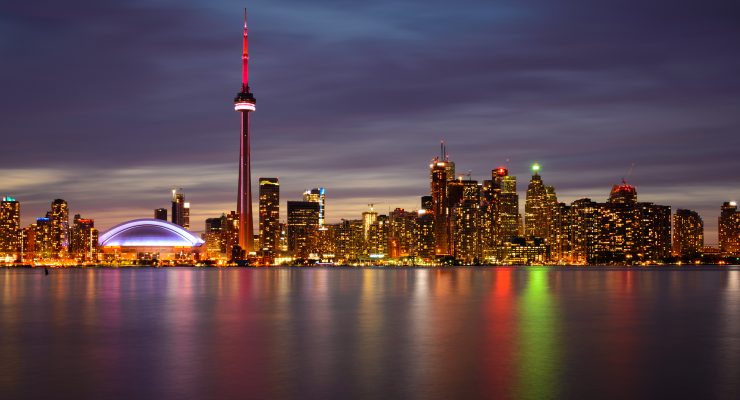
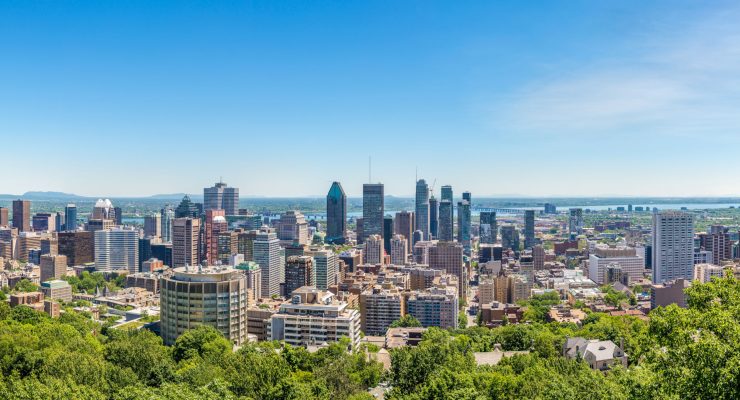
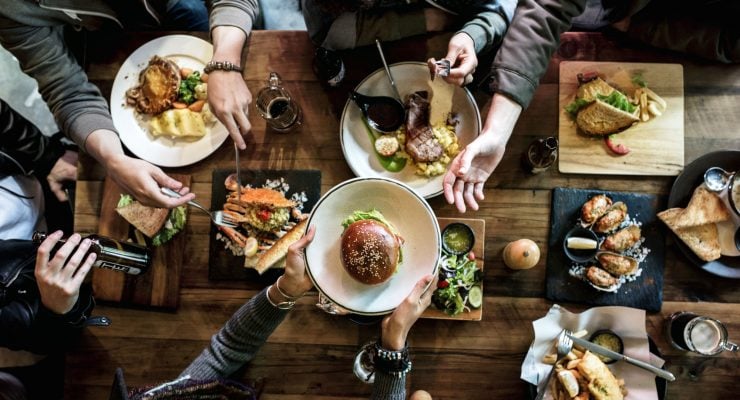
0 comments
{{like.username}}
Loading...
Load more